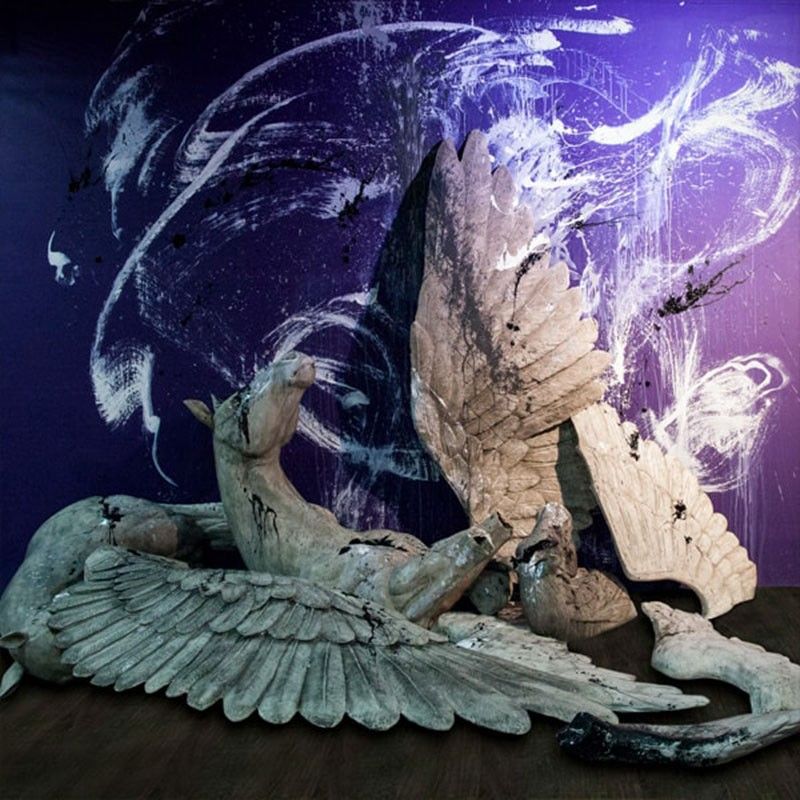Into the void with Ronald Ventura

MANILA, Philippines - When you walk with artist Ronald Ventura from a restaurant That Shall Not Be Named to his house in a village That Also Shall Not Be Named, your 10-minute walk turns into an eternity. The humdrum streets twist and turn into sinister woods and shadowy forests. We’re not in Kansas (well, in this case Q.C.) anymore.
The man talks in metaphors. You get a sense of what he is saying about his art and what is currently transpiring in his surreality of a life only when you’ve surrendered yourself to signs, aphorisms and ciphers. For the “Carousel” installation at the Metropolitan Museum of Manila (Met), Ronald’s goal was for visitors to forget that they are in an exhibition.
“Once they ride one of the animals in the carousel,” he shares, “they would be transported elsewhere — from the museum space and into an amusement park in one’s head.”
Two of the people to talk to in order to get more sense in Ventura’s sense of aesthetics and flair for the unexpected are curators Ruel Caasi and Patrick Flores.
Art historian and critic Patrick Flores got to know Ronald Ventura better when the former curated the latter’s show at the Vargas Museum in 2012.
“Ventura is a relentless image-maker,” says Flores. He talks about how Ventura’s art has evolved through the decades:
“It has been a slow but steady transformation, building on his graphic intelligence. It proceeds from an intense engagement with the figure and its mutations, or better to say, its disfiguration through certain devices like the palimpsest or logics like morphing or digital manipulation. We notice a kind of classical aspiration that lapses into the baroque — although an Italian art critic thinks it’s gothic by way of mass media. All told, it has been an interesting drift, assuming both depth and horizon along the way.”
What is Flores method of curating a Ronald Ventura exhibition?
“Ventura is very much at the center of the art market, so I stay away from those aspects in his art that are prone to the appropriation of the market. But Ventura’s art is larger than the market. I want to access that: to create another possibility of discourse beyond the market discourse. Curating Ventura also gives the curator the chance to spend more time in the appreciation of the artist’s talent, which is weaned away from the market, rendering it independent of the buying and the selling at some productive level.”
For the Met exhibition titled “Shadow Forest: Encounters and Explorations” on view until March 4 — one of the offsite events of Art Fair Philippines (AFP) 2017 — Flores’ approach was to offer a sharper profile for the graphic work of Ventura. (A sample of Ventura’s new works including images viewed through a lightbox and new digital prints are featured in a special setting at AFP.)
“I wanted to reference his earlier work, the foundation of his exploration with figuration and how it gathers guises in carousels, figurines, intermedia, installations, and digital productions. I am curious about how the singular act of drawing becomes part of a language of replication or mass production in public forms, digital imagery, and reproducible objects.”
What does Flores think of Ventura’s artistic preoccupations in the coming years? More mutations of the figure are in the offing, of course. “But,” adds Flores, “expect him to be more adventurous in embarking on large-scale painting, drawing and installation.”
And prepare yourselves for more walks into sinister woods and shadowy forests, or more twirls in Ronald Ventura’s (un)merry-go-rounds and (s)carousels.















